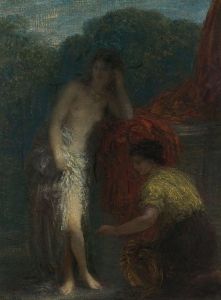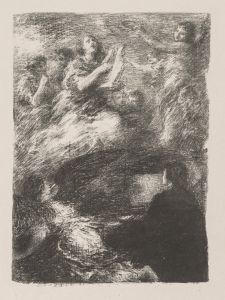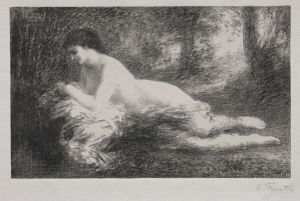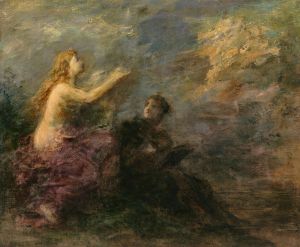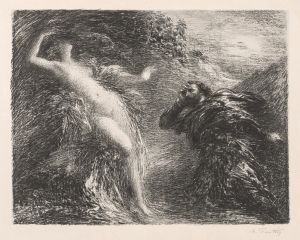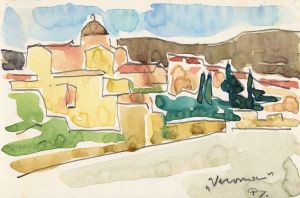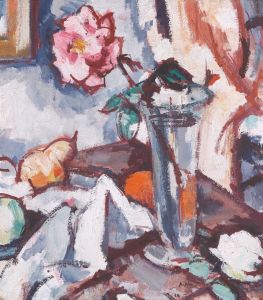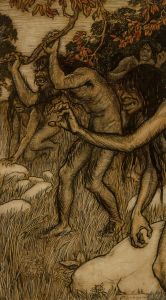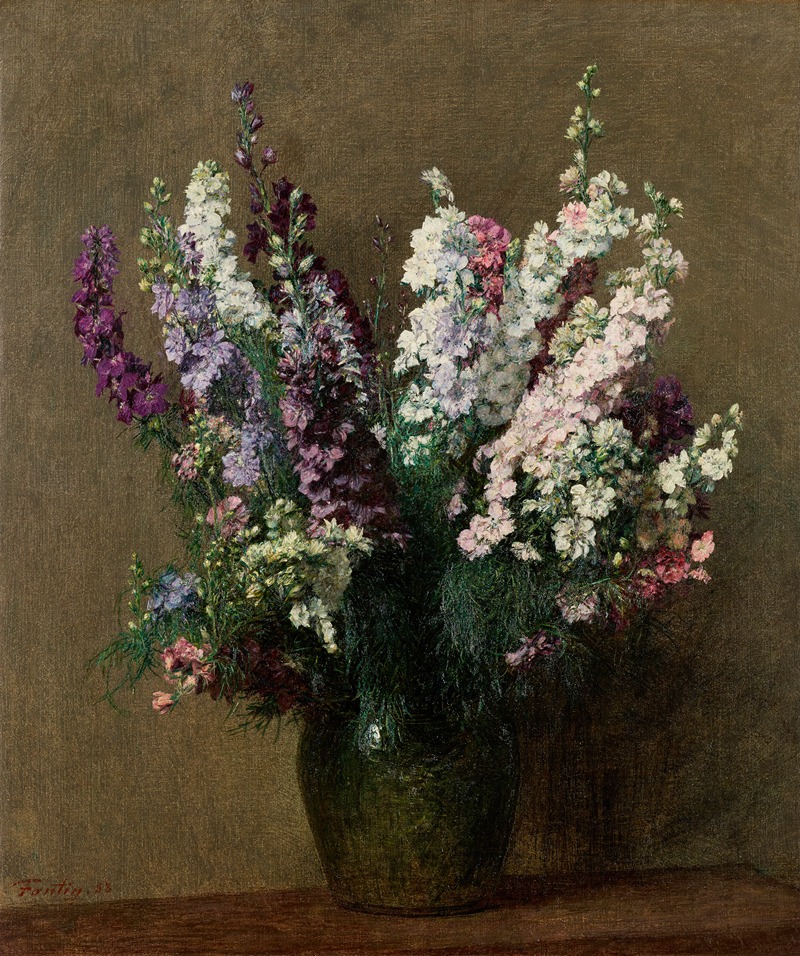
Pieds d’alouette
A hand-painted replica of Henri Fantin-Latour’s masterpiece Pieds d’alouette, meticulously crafted by professional artists to capture the true essence of the original. Each piece is created with museum-quality canvas and rare mineral pigments, carefully painted by experienced artists with delicate brushstrokes and rich, layered colors to perfectly recreate the texture of the original artwork. Unlike machine-printed reproductions, this hand-painted version brings the painting to life, infused with the artist’s emotions and skill in every stroke. Whether for personal collection or home decoration, it instantly elevates the artistic atmosphere of any space.
Henri Fantin-Latour, a renowned French painter and lithographer, created the artwork Pieds d’alouette (translated as Larkspur in English). This painting is an example of Fantin-Latour's celebrated floral still lifes, a genre for which he gained significant recognition during his career. Known for his meticulous attention to detail and his ability to capture the delicate beauty of flowers, Fantin-Latour's works in this category are widely admired for their technical precision and subtle use of color.
Fantin-Latour painted Pieds d’alouette in the late 19th century, a period when he was actively producing numerous still lifes featuring flowers. These works were highly sought after, particularly by collectors in England, where his floral paintings enjoyed considerable popularity. The painting depicts a carefully arranged bouquet of larkspur flowers, rendered with remarkable realism. The composition reflects Fantin-Latour's characteristic style, which combines a naturalistic approach with a sense of quiet elegance. The soft interplay of light and shadow enhances the three-dimensional quality of the flowers, while the muted background directs the viewer's attention to the intricate details of the bouquet.
Fantin-Latour's floral still lifes, including Pieds d’alouette, are often praised for their timeless quality and their ability to evoke a sense of serenity. Unlike many of his contemporaries who embraced the Impressionist movement, Fantin-Latour remained committed to a more traditional, realist approach in his still lifes. This dedication to realism is evident in the lifelike textures and subtle gradations of color in Pieds d’alouette.
While Fantin-Latour is perhaps best known for his floral still lifes, he was also an accomplished portraitist and a creator of imaginative lithographs inspired by music and literature. His diverse body of work reflects his versatility as an artist and his deep appreciation for beauty in its various forms.
Today, Pieds d’alouette is recognized as a fine example of Fantin-Latour's mastery in the still-life genre. The painting is housed in a museum or private collection, though specific details about its current location are not readily available. Fantin-Latour's contributions to art continue to be celebrated, and his floral paintings remain a testament to his skill and artistic vision.





